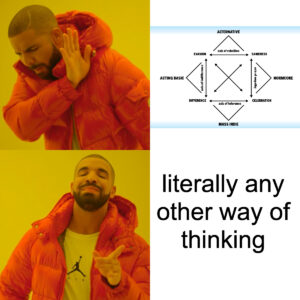1. Next week we will be focusing more on how to listen to and write about music more carefully—a skill that will be key for developing your Essay 2s. For Friday, I want you to work on close-reading the lyrics of your selected song (e-mail me if your song has no lyrics). Specifically, what I want you to do is to write out the lyrics line by line and identify a social issue in at least five lines (using your own words).
EX (from Drake’s “Hotline Bling”):
“You used to call me on my cell phone”
possible issues: loss (used to…), love, friendship? Trust?
“Late night when you need my love”
possible issues: love, sex (late night), dependence (you need)
2. In the text we’ve read this week, “Drake: Rapper, Actor, Meme,” Jon Caraminica creates a thesis about Drake’s “Hotline Bling” that connects this song to a key contemporary “social issue,” the meme. In a few sentences, unpack (using your own words) the connection Caraminica makes between the aesthetics of “Hotline Bling” and the issue of memes and meme-making. If you’d like, you can also add your own response to this article—ideas or opinions you’ve had while reading.





